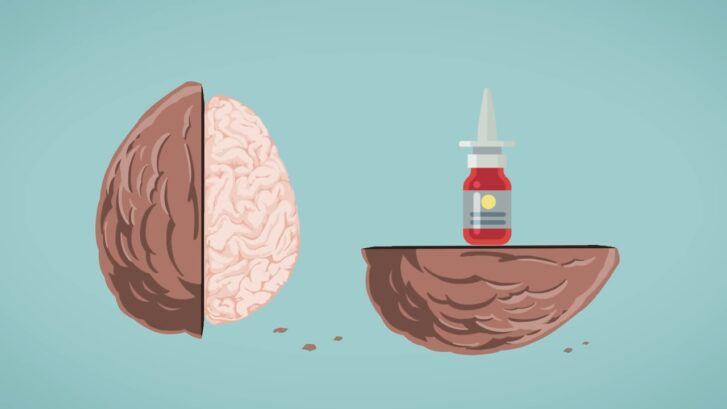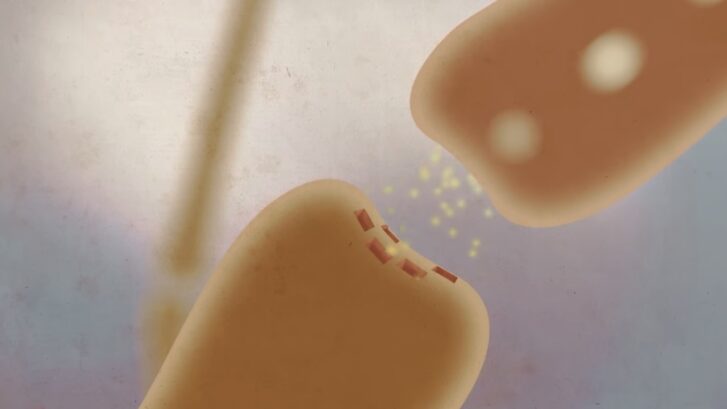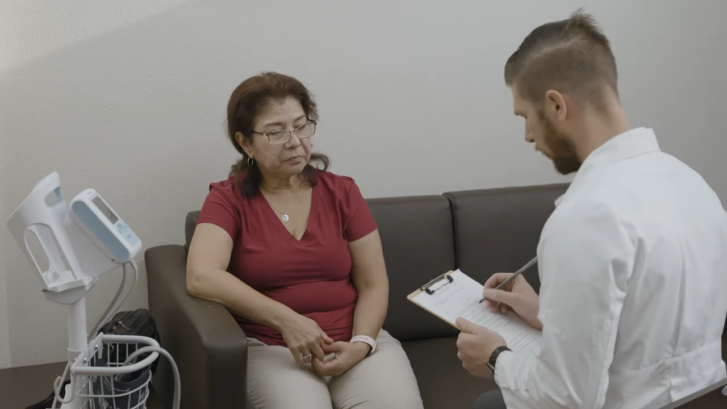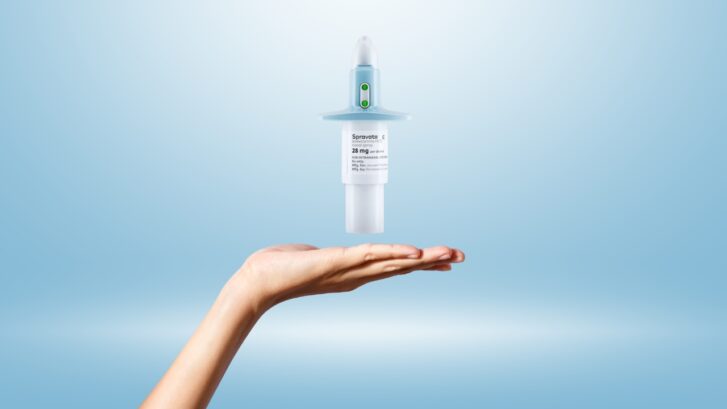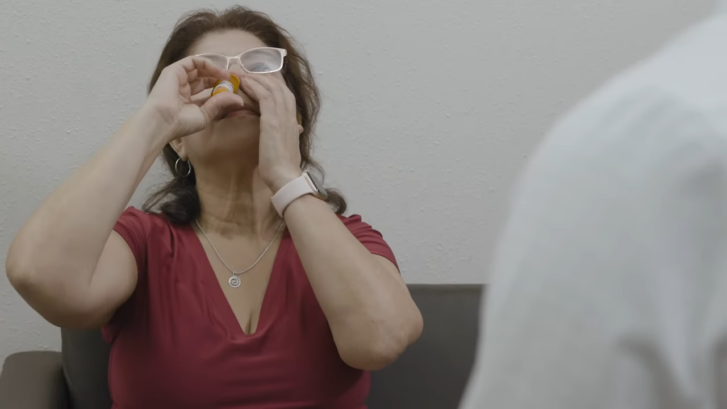Besides symptoms, people who suffer from depression or another mental health condition have something else in common: misfiring neurotransmitters in the brain.
When neurotransmitters aren’t communicating, symptoms like sadness, irritability, and tiredness can rule your life, negatively affecting all aspects of daily living. Fortunately, a medicine like Spravato may help.
Spravato isn’t like other antidepressant treatments.1 Standard antidepressant medications boost levels of naturally formed chemicals in the brain like dopamine, norepinephrine, glutamate, and serotonin.
These neurotransmitters are the chemical messengers of the brain, the key to initiating and regulating how cells communicate.
When these chemical messengers are weakened or damaged, it’s difficult to control moods, which is a hallmark symptom of many kinds of mental illness.
SPRAVATO®-pi – SEE PDF FILE WITH HIGHLIGHTS OF PRESCRIBING INFORMATION.
What Is Esketamine?
Approved by the FDA in 2019, Esketamine2 is a derivative of the anesthetic drug ketamine. Unlike most antidepressants that come in a pill form,
Esketamine is a nasal spray, commercialized under the brand name Spravato. It’s designed to be used alongside traditional oral antidepressants to treat severe, treatment-resistant depression.
The administration of Esketamine is tightly controlled due to its potent effects. It must be given by specially trained medical staff in a certified clinical setting. So, if you’re receiving this treatment, you’ll typically spend a few hours at the clinic before returning home.
Research has shown that ketamine therapy, including Esketamine, has demonstrated a significant success rate in alleviating symptoms of treatment-resistant depression, providing new hope for patients who have not responded to other treatments.
No self-administration here, which ensures safety and efficacy.
What Do These Neurotransmitters Do?
- Dopamine is Mr. Feel Good, responsible for pleasure, satisfaction, and motivation.
- Glutamate helps regulate learning and memory.
- If there’s a problem with norepinephrine, you may suffer from low energy and poor concentration. Spurts of norepinephrine can result in feelings of euphoria but could also lead to high blood pressure and episodes of hyperactivity.
- Serotonin is key to happiness, anxiety, and mood levels.
Higher levels of these cell communicators allow brain cells to talk to each other more fluently, translating into more positive overall moods. According to some studies, more than 30 percent2 of people diagnosed with depression experience a failure to respond to conventional therapy like antidepressants and psychotherapy.
Spravato boosts glutamate, already the most plentiful neurotransmitter in the brain.
When this happens, it begins exciting cells in the brain, encourages learning functions, boosts memory, and trains your brain to become comfortable with this new state, helping to battle the symptoms of depression.
The main ingredient in Spravato (esketamine) is known to create synapses – or connections – between brain cells that many people who struggle with depression lack. When these connections can impact more cells at a time, the individual is more likely to feel the full effects of a medication.
Clinical trials reveal that esketamine (marketed as Spravato) can have a positive effect on symptoms of depression by lowering the frequency of suicidal thoughts and strengthening or repairing damaged or weakened neurotransmitters, thereby potentially helping the development of cell connections in the brain.
Case Study: Sarah’s Journey to Hope
Meet Sarah, a resilient 35-year-old who, despite years of battling treatment-resistant depression and trying various antidepressants, found herself in a seemingly unyielding struggle.
Frustrated and seeking a breakthrough, Sarah, in collaboration with her mental health specialist, decided to explore Spravato as a potential solution. Spravato operates differently.
It uses esketamine to communicate with the brain’s receptors, providing a fresh perspective in the field of mental health. For Sarah, this shift in approach meant a chance to break free from the hold of depression, focusing on a neurotransmitter called glutamate.
The effectiveness of Spravato varies from person to person. Sarah started feeling better within a few weeks, but the real change took time. Some people experience quicker results, while others need more sessions. The key is to be patient and stay in touch with your healthcare provider.
Sarah’s regular check-ins allowed her treatment plan to adapt, ensuring it suited her unique needs.
Diagnosis & Treatment

If you have symptoms of depression or another mental illness, the first step in possibly managing the symptoms is getting diagnosed.
A doctor may perform a physical exam and order blood tests and other diagnostic procedures to discover an underlying medical problem, while a mental healthcare professional will explore your feelings, thoughts, and behavior, and inquire about personal and family history of mental illness.
Newer forms of treatment like Spravato or something else may help.
How to Get Esketamine Nasal Spray – A Step-by-Step Guide
| Step | Action | Details |
|---|---|---|
| Step 1 | Initiate a Conversation with a Healthcare Professional | Find a psychiatrist, schedule an appointment, and prepare your medical history. |
| Step 2 | Comprehensive Assessment | Review medical history, disclose current medications, and assess risks. |
| Step 3 | Prescription and Treatment Plan | Get a prescription, understand your treatment plan, and clarify doubts. |
| Step 4 | Supervised Administration Sessions | Be monitored by healthcare professionals, learn how to use the spray, and ensure safety. |
| Step 5 | Ongoing Monitoring and Support | Regular check-ins, report side effects and maintain open communication. |
| Step 6 | Compliance with the Treatment Plan | Attend all sessions, follow medication guidelines, and make lifestyle changes. |
| Step 7 | Access to Continued Support | Benefit from enhanced treatment outcomes, emotional well-being, and a holistic approach. |
Obtaining esketamine nasal spray involves a collaborative effort between individuals and their healthcare providers.
By initiating a conversation, undergoing a comprehensive assessment, and adhering to a personalized treatment plan, individuals can navigate the journey toward potential therapeutic relief with esketamine nasal spray4.
Warnings and Precautions for Using Spravato
Before considering the use of Spravato, it is crucial to have a comprehensive discussion with your healthcare provider.
This medication may not be suitable for individuals with certain health conditions, and the following warnings and precautions should be taken into account:
| Side Effects | Precaution |
|---|---|
| Uncontrolled Heart Problems | Consult your doctor if you have heart-related issues before using Spravato. |
| Previous Brain Blood Supply Issues | Discuss history of stroke or blood supply problems to the brain with your healthcare provider. |
| History of Substance Abuse | Inform your doctor about any past drug or alcohol abuse before starting Spravato. |
| Psychosis or Bipolar Disorder | Discuss any history of psychosis or bipolar disorder before using Spravato. |
| Overactive Thyroid | Inform your doctor about any improperly treated hyperthyroidism. |
| Lung Problems | Discuss any lung problems that cause breathing difficulty with your healthcare provider. |
| Sleep Apnea and Obesity | Inform your doctor if you have sleep apnea and are extremely overweight. |
| Heartbeat Irregularities | Discuss history of slow or fast heartbeats with your healthcare provider. |
| Serious Head Injury or Serious Health Issues | Inform your healthcare provider about any serious head injury or ongoing serious health issues. |
It is imperative to disclose your complete medical history and any ongoing health concerns to your doctor to ensure that Spravato is a safe and appropriate treatment option for you.
Always follow your healthcare provider’s guidance and adhere to any prescribed precautions to optimize the benefits of Spravato while minimizing potential risks.
FAQ
Summary
Spravato is an innovative treatment for treatment-resistant depression, working through a novel mechanism that targets the brain’s glutamate receptors, different from traditional antidepressants.
It shows promise for those who haven’t responded to other treatments, with varying timelines for efficacy.
Obtaining Spravato involves a comprehensive process, including consultation with a healthcare professional, a detailed assessment, and a personalized treatment plan, under supervised administration.
Safety discussions and adherence to treatment guidelines are crucial for optimizing benefits and minimizing risks.
References
- Janssen Pharmaceuticals. SPRAVATO- esketamine hydrochloride solution
- FDA approves new nasal spray medication for treatment-resistant depression; available only at a certified doctor’s office or clinic. 2019.
- Khalid Saad Al-Harbi. Treatment-resistant depression: therapeutic trends, challenges, and future directions. 2012.
- McIntyre RS, Carvalho IP, Lui LMW, Majeed A, Masand PS, Gill H, et al.. The effect of intravenous, intranasal, and oral ketamine in mood disorders: a meta-analysis. J Affect Disord. (2020) 276:576–84. 10.1016/j.jad.2020.06.050
Related Posts:
- How Many Valence Electrons Does Magnesium Have? How…
- How Does Family Life Affect Mental Health? Building…
- Probiotics and Mental Health: The Gut-Brain Connection
- Is Weight Lifting Good for Brain Health? Analyzing…
- How Long Does Hormone Replacement Therapy Take to…
- Art Therapy for Post-Traumatic Stress Disorder: The…

